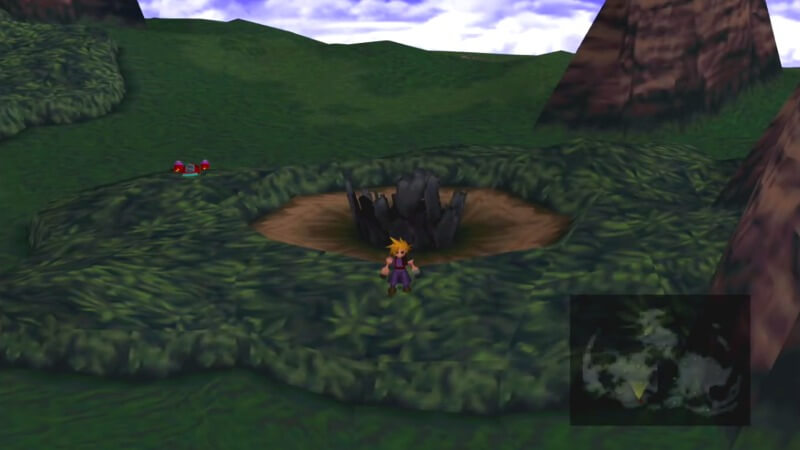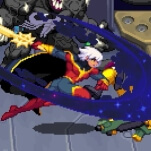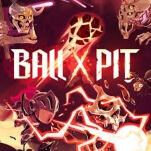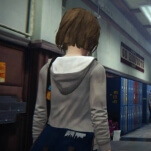We Haven’t Properly Mourned the Death of RPG Overworlds

Editor’s Note: This week at Endless Mode, we’re exploring maps and how they help us navigate virtual spaces, both literally and not-so-literally. Whether it’s RPG overworlds that work as abstractions for a larger backdrop or scribbles that offer more insight into the person who sketched them than actual directions, we’ll be offering our thoughts on the near constant presence of in-game maps.
This probably goes without saying, but over the last few decades, the shape and form of big-budget RPGs have transformed dramatically. Whether it’s the adoption (and then general abandonment) of a particular brand of turn-based combat, the evolution of random encounters, or the replacement of D&D-style stat sheets with more streamlined progression systems, the RPGs of today often look quite different from games like Ultima 1 and its direct descendants. And while many of these changes have been celebrated, there’s one loss that stings in particular: the death of overworld maps.
Okay, maybe using the word “death” is a bit dramatic; after all, one of the best games of this year, Clair Obscur: Expedition 33, shows that the perfect way to iterate on this largely abandoned presentation is to introduce a whimsical French marshmallow man to act as your airship equivalent. And that’s not to mention the approximately eight billion RPG Maker games and beyond, which often draw on an era when this presentation was the norm. Still, when it comes to most modern big-budget titles, overworlds have been left in the lurch, as these games have opted for much shinier, market-tested open worlds that seek to drown the player in a vast ocean of Stuff that will (allegedly) keep engagement high.
In some ways, it is unsurprising that overworlds were largely abandoned by modern “cutting-edge” RPGs. This high-level, abstracted presentation was a way to get around technical limitations of the time, and I’m sure if you asked developers behind many classics from the ‘80s and ‘90s, they’d say they would have preferred to create the type of large-scale, seamlessly interconnected spaces utilized in many contemporary games. But, as it goes with many design innovations that arose out of necessity, this old-school style of presentation still comes with many boons.
For starters, overworlds can help with pacing. When handled well, they act like a good editor, encouraging designers to cut away the tedious interstitial bits between points of interest. Instead of cataloging every moment of a lengthy trek from a castle to a faraway dungeon, with each stray monster and blade of grass rendered in 1:1 exactitude, you’re instead placed on a map that acts as a sort of summary, reducing the downtime between important events (assuming you don’t run into too many randomized encounters, of course).
It can be tempting for designers and storytellers to fill in every little detail of their settings (ask any first-time Dungeon Master), but the reality is that constraint can be a virtue: “brevity is the soul of wit,” and all that. With a zoomed-out, top-down perspective of the world, designers are given more control over the narrative’s pacing, as they don’t have to worry that the player will become obsessed with tracking down every tower, collectible, or whatever other brain-numbing task distracts them from the next seemingly-pressing-but-not-actually story beat. At the same time, they also offer room for some amount of exploration, with the particularly good ones finding a balance by leaving plenty to do without drowning the player in “content.”
A weird irony when it comes to this shift in games is that movies sort of developed in the opposite direction. Most films used to utilize something called continuity editing, where storytellers would detail exactly how characters got from one place to another with shots that depicted transit and so on—in the context of old school Hollywood films, this is called classical continuity. However, after a wonderful band of French freaks kicked off the French New Wave (bear with me as I very reductively summarize the intricacies of film history), these existing conventions were challenged, resulting in an uptick of techniques like jump cuts, which jolt the audience from one scene to the next with little warning. Basically, you went from films generally being slower paced, with many extraneous details, to movies that were often more to the point.
I bring this up because I think the shift in how games are presented is less an artistic choice, like this transformation that happened with film, and more a natural byproduct of an industry obsessed with overcoming the next technical challenge: sometimes, the question asked by publishers is whether something can be done, rather than if it should. More powerful computer chips mean that games can now render massive environments full of foliage, wildlife, NPCs, and other extraneous details, allegedly wowing “potential consumers” with this impressive degree of fidelity.
-

-

-

-

-

-

-

-

-

-

-

-

-

-

-

-

-

-

-

-

-

-

-

-

-

-

-

-

-

-

-

-

-

-

-

-

-

-

-

-








































